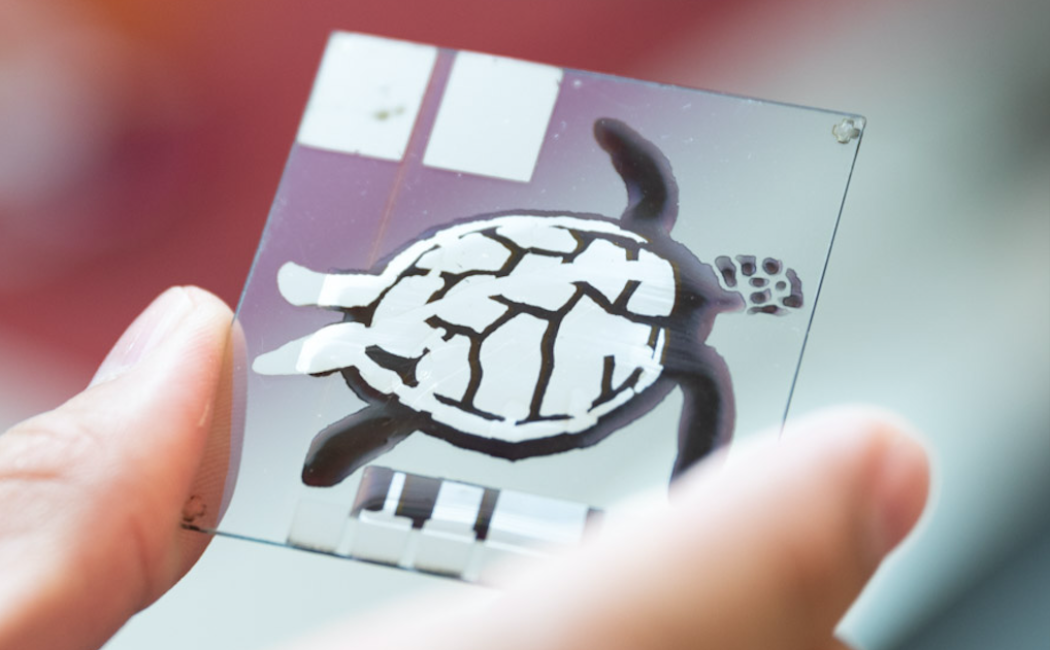
Printing technologies are emerging in the field of photovoltaics, as they are compatible with solution processable materials. Printing offers endless possibilities in terms of customization, freedom of design, ability to use flexible substrates for large-scale processes. Our research focuses on the optimization of the printing processes to develop low-cost and highly efficient solar cells by using high throughput techniques, such as inkjet printing, 3-D printing and slot-die coating. In addition, our approach includes the use of eco-friendly solvents for the next generation of green solar cells.
1. Ink-jet Printed Organic Electronics
Digital printing is evolving from being used to graphically display information into a tool that generates and enhances a variety of functionalities. The phrase “Printing beyond color” is taking a new meaning when adding electronic functions to paper and plastics through the use of organic materials, with the advantage of properties such as flexibility, stretchability, and freeform deposition. In OMEGA Lab, we are bridging the gap between research-scale device fabrication and consumer-ready manufacturing. Our work focuses on the engineering of inks that allow a repeatable printing process, the optimization of printing parameters to yield high-efficiency functional films, and the study of interfaces between the different layers that encompass fully working devices. Through our research, we aim to produce fully-printed devices including solar cells, thermoelectric generators, capacitors, and a variety of sensors to enable a wide range of applications in packaging, healthcare, construction, and disposable/single-use electronics.
2. 3D Printed Organic Electronics
Three-dimensional (3D) printing has emerged as a promising fabrication process used in a wide variety of fields including aerospace, medicine, architecture, education, and automotive due to its versatility, customization, and its ability to produce prototypes in a speedy manner. While still a young technology, there has been increased interest to extend the advantages of additive manufacturing by adding functionalities in the 3rd dimension in the form of electronic devices as well as the change of form or function over time through stimuli such as heat, current or light. Our lab focuses on the formulation of materials (both organic and inorganic) that go beyond creating conductive paths but rather add extended functionality to fabricate electrical components for energy harvesting, energy storage, sensing and actuating in 3 dimensions. Additionally the design of customized parts with complex shapes and sizes in combination with material properties such as flexibility, elasticity, will permit the development of functional devices that can be used for smart objects, soft robotics, and medical applications.
3. Slot-Die Coating
Slot-die coating is one of many methods that can be used to deposit a thin liquid film to the surface of a substrate. Compared to other existing coating techniques this method can easily integrated from lab to scale-up processes. The process results with best quality uniform thin film deposition across the length/width of the coating surface. This coating technique is favorable with a wide range of solution of different viscosities. The process is also suitable with roll-to-roll deposition, this method is of great interest among researchers these days for transition from lab-scale to pilot-level production. Currently, the main focus of research is to use slot-die coating technique in the field of photovoltaic, OLEDs, quantum dots and many others.